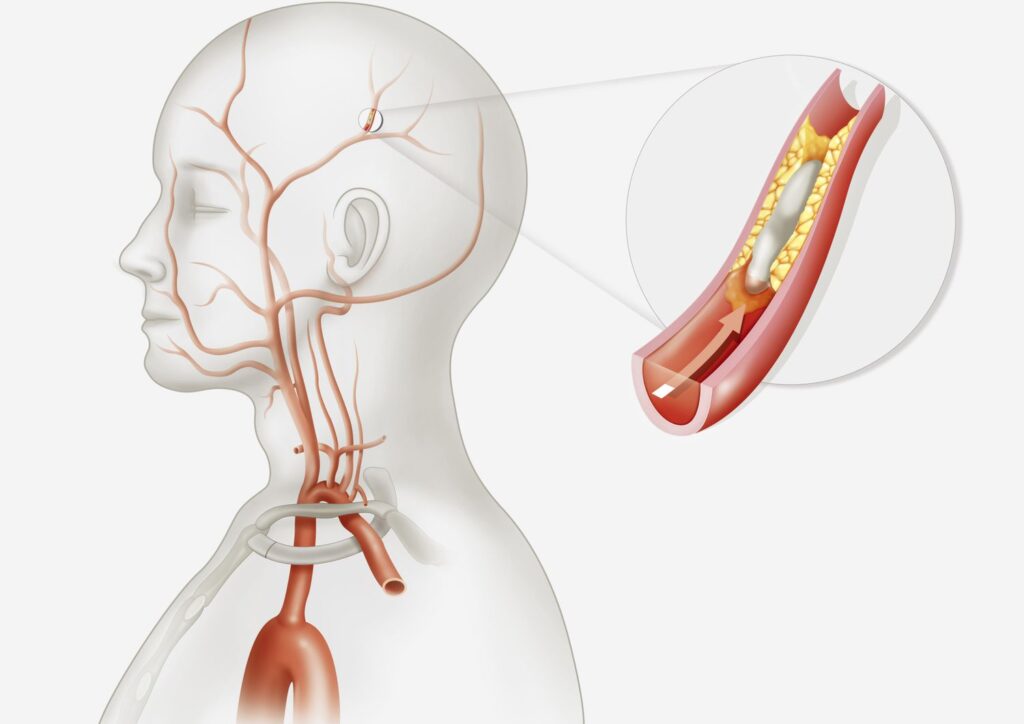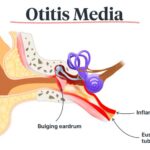Acute thromboembolic stroke occurs when a blood clot obstructs cerebral blood flow, leading to ischemia and potential neuronal damage. This condition demands immediate medical intervention to prevent irreversible brain injury.
Pathophysiology of Acute Thromboembolic Stroke
A thromboembolic stroke results from an embolus or thrombus occluding a cerebral artery, depriving brain tissue of oxygen and nutrients. This triggers a cascade of cellular damage, inflammation, and, if untreated, irreversible neuronal death.

Causes and Risk Factors
1. Cardiogenic Embolism
- Atrial fibrillation
- Valvular heart disease
- Myocardial infarction
2. Atherosclerosis
- Plaque rupture leading to thrombosis
- Carotid artery stenosis
3. Hypercoagulable States
- Antiphospholipid syndrome
- Cancer-associated thrombosis
4. Other Contributing Factors
- Hypertension
- Diabetes mellitus
- Smoking
- Obesity
Symptoms of Acute Thromboembolic Stroke
- Sudden Weakness or Numbness: Especially on one side of the body
- Speech Disturbances: Slurred speech or difficulty understanding
- Vision Changes: Blurred or double vision
- Severe Headache: Often associated with hemorrhagic transformation
- Loss of Coordination: Difficulty walking or maintaining balance
Diagnostic Approach
1. Clinical Assessment
- National Institutes of Health Stroke Scale (NIHSS)
- Glasgow Coma Scale (GCS)
2. Imaging Studies
- Non-contrast CT scan: First-line to rule out hemorrhage
- MRI with Diffusion-Weighted Imaging (DWI): High sensitivity for ischemic regions
- CT Angiography (CTA): Identifies vessel occlusions
- Carotid Ultrasound: Evaluates carotid atherosclerosis
3. Laboratory Tests
- Coagulation profile
- Cardiac biomarkers
- Complete blood count
Treatment Strategies
1. Reperfusion Therapy
- Intravenous Thrombolysis (tPA): Within 4.5 hours of symptom onset
- Endovascular Thrombectomy: For large vessel occlusion up to 24 hours post-onset
2. Antithrombotic Therapy
- Antiplatelets: Aspirin, Clopidogrel
- Anticoagulation: Warfarin, Direct Oral Anticoagulants (DOACs) in cardioembolic strokes
3. Supportive Care
- Oxygen therapy
- Blood pressure management
- Glucose control
4. Rehabilitation and Secondary Prevention
- Physical and Speech Therapy: Enhances recovery post-stroke
- Risk Factor Modification: Lifestyle changes, smoking cessation, diet optimization
- Medication Adherence: Statins, antihypertensives, and anticoagulants as prescribed
Prognosis and Complications
Favorable Prognostic Factors
- Early reperfusion therapy
- Younger age
- Mild initial deficits
Adverse Prognostic Factors
- Delayed medical intervention
- Large infarct size
- Comorbidities (e.g., diabetes, heart disease)
Potential Complications
- Hemorrhagic transformation
- Recurrent strokes
- Long-term disability
Acute thromboembolic stroke is a medical emergency requiring immediate intervention. Rapid diagnosis and treatment significantly improve outcomes, while preventive measures reduce the likelihood of recurrence. A comprehensive approach encompassing emergency care, rehabilitation, and lifestyle modifications is essential to enhance patient prognosis.

